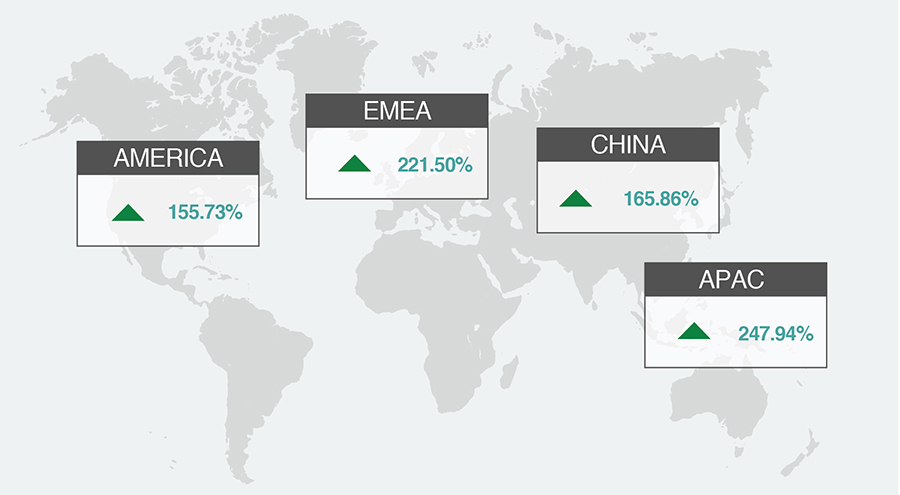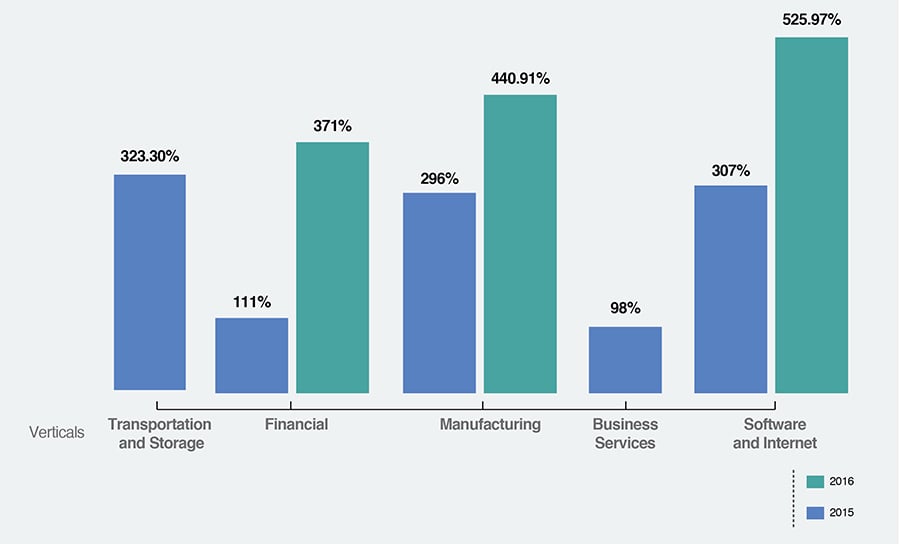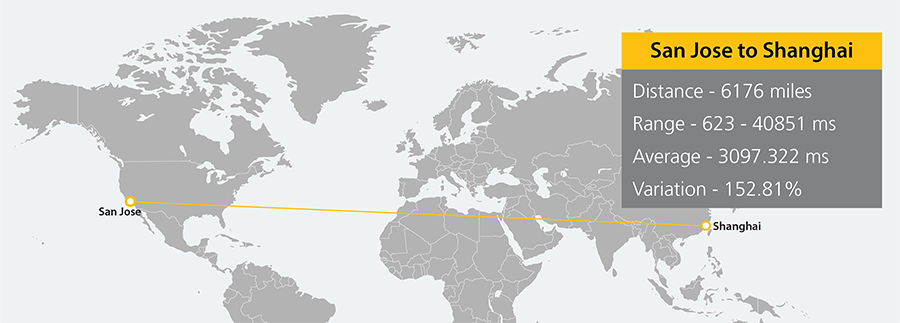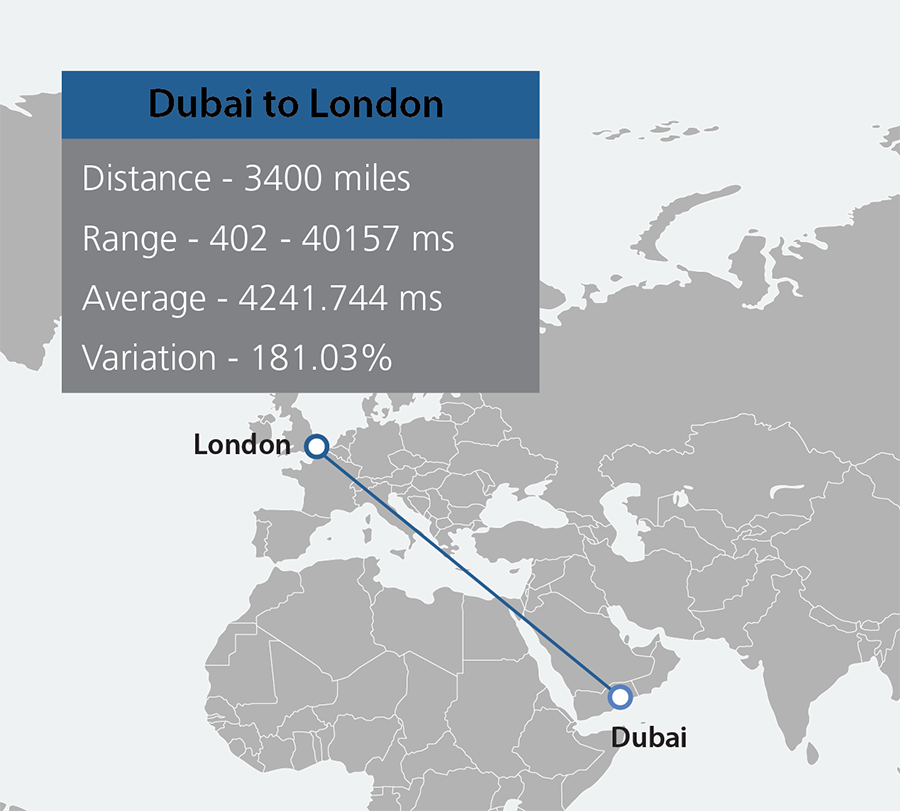Is WAN Traffic Growth the New Moore’s Law?

Percentage Growth in Global WAN Traffic: 2015-2016
Moore’s Law has dominated thinking in Silicon Valley for more than fifty years. It suggests that computer processing power would double every two years. And while some technology analysts claim that Moore’s Law is dead or dying, it is quite possible the context is merely shifting.
We may not be doubling the number of components in a CPU every 2 years. However, modern innovations in technology is less bound by the constraints of physical machinery:
WAN Traffic Is on the Rise
“Is the growth of data – or, really, WAN traffic – the new context for Moore’s Law?”

In our recent 2017 State of the WAN Report, Ayaka aggregated anonymous data from over 5000 locations in 63 countries and found that WAN traffic had grown by over 200% year-over-year. In addition, nearly 50% of that data was sent to and from cloud applications.
As companies globalize, mobile devices continue to proliferate, and Big Data and video have become the crux in what is attributing to traffic across industries. It seems like there will be a steady upward trend in the amount of traffic that is sent around the world.
The trouble here is that, while traffic can grow quickly, the enterprise WAN must keep up with the heavy demand for bandwidth.
This has led to an increase in the demand for high-speed connectivity and increasing WAN link sizes. In this sense, data is still constrained by the hardware through which it flows – bandwidth is an expensive, yet necessary investment. But investing in greater WAN link sizes at the edge may not be the only answer to meet the rising demands for better connectivity and faster application performance.
The Middle Mile Problem
WAN traffic may be doubling, but, at least according to the Aryaka report, performance is not.
Using the public Internet, Aryaka ran wgets between different points of presence located around the world and tested the application response time.
This test revealed that application response times can be as high as 40 seconds and have a variation of nearly 200% depending on the distance between the sites. As distance between the sites increased, the application performance problems increased as well.
Worse, while application performance was relatively stable and reliable across some short distances (as within the US), some regions experienced inconsistency regardless of distance, suggesting that the problems might be attributable to network infrastructure deficiencies across the developing world.
In other words: no matter how big your WAN link sizes at the edge become, if the middle mile is not optimized for the data you’re sending or receiving, your end users may experience poor application performance. And this will only compound as the demand for data grows ever greater.
Latency, packet loss, and jitter, can greatly interfere with the end user experience, and more bandwidth—more hardware, more boxes, more IT staff to monitor and manage—is not the way to keep up with demand. Even if we can double the WAN’s capacity to handle traffic every two years per Moore’s Law (which isn’t the case), it certainly can’t keep up with traffic that’s doubling year over year.
Risks to Enterprise Performance
The trouble with an unreliable middle mile is that enterprises depend on the fast, reliable flow of data to meet the bottom line.
And as enterprises globalize and teams communicate and collaborate via video, VoIP, real-time collaboration tools, and third-party cloud platforms and apps, the need for reliability of data transfer across oceans and continents becomes even more imperative.

A poor connection between China and the US can hold up a business-critical project; a series of dropped calls between London and Dubai can mean thousands in air travel fees just to hold a meeting; and an inability to access a mission-critical ERP while selling in India can slow sales growth.

The middle mile must be optimized for performance if we want to solve for the problems encountered during global data transfer. And that means liberating ourselves from hardware, ditching the public Internet, and moving to the secure cloud.
An Effective Cloud Solution
To effectively solve for the explosion of data and our need for a stable WAN, we need solutions that can scale to keep up with the year-over-year growth in traffic while incorporating application optimization and acceleration.
WAN managers and IT decision makers should look for modern WAN solutions that:
- Are delivered as a service
- Contain built-in WAN Optimization
- Leverage points of presence located strategically close to business locations globally
- Connect through a dedicated, private, and redundant core network
- Can be deployed in days not weeks
- Scale as needed
- Are fully-managed
Aryaka’s Managed SD-WAN does all of the above – without bogging your network down with hardware and hardware maintenance. Using 28 points of presence located within 30 ms of 95% of the world’s business users, Aryaka has built a global private network that bypasses the public Internet, yet can be delivered as a service.

WAN Optimization and SD-WAN are built into the network, so you don’t need extra hardware to ensure throughput and stable connectivity, and, because the network is cloud-based, your enterprise can scale bandwidth in hours instead of weeks.
Keeping up with traffic growth is simple with Aryaka, because Aryaka was built with the understanding that WAN traffic, like 1965’s circuits, is still at the beginning of its explosive growth.
So, is WAN traffic subject to the new Moore’s Law? We’ll have to keep an eye on it in next year’s State of the WAN report. Until then, you can download this year’s State of the WAN report here.
- Accelerate CAD/CAM Performance
- Improve Zoom Conferencing Performance
- Calypso Embraces a SaaS-first Strategy
- CallisonRTKL Transforms their WAN
- Kleinfelder Improves Application Performance
- Teradyne Transforms their WAN
- SAP web application performance
- Kleinfelder Improves Application Performance
- Industrial Manufacturing Company Transforms WAN









